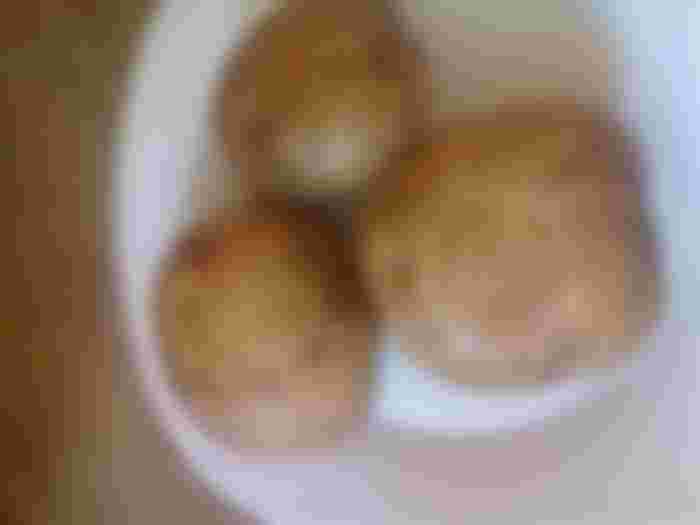It fascinates me to be able to write about this topic of agriculture and to travel through the world of it. Today I present for the eternity of the letters through read.cash the group of plants that along with cereals formed the basis or first stages for human food, I refer to the starchy plants and receive this name because of the concentration of starch they contain and are so named because starch is starch.
This group or category includes roots such as cassava (Manihot esculenta) and sweet potatoes (Ipomea batatas), tubers such as potatoes (Solanum tuberosum), yams (Dioscorea alata) and/or fruits such as bananas (Musa balbisiana).

Also among this category are one of the broadest categories such as legumes, whose seeds are harvested for food, including lentils, chickpeas, beans and soybeans...

But let's go to the definition and development of this interesting topic and start with the question: What is a Feculent plant?
In this concept are grouped species of plants other than cereals that provide starch for human nutrition.
Thus we have that...
Roots rich in sugars
The main sugar found in vegetables is starch, already mentioned that it is found in cereals and also in the grains of leguminous plants, but roots such as cassava and sweet potato and tubers such as yam, ocumo and potato are also sources of reserves.
These foods have not had the preponderance of cereals in the world, but there are regions where their importance is of first order as they are the basis of their diet, as is the case of African countries.
Cultivation of Feculent Plants in the World
China is the leading producer of potato and sweet potato.
Africa is the leading producer of cassava, yam and togo (rhizome) and fruit such as plantain (green banana).
In America, Brazil stands out as the world's second largest producer of cassava.
We are going to write a little about some of the starchy plants and we will start with ...

The Potato (Solanum tuberosum)
It is a vegetable of the same family as the tomato! That is to say, it is a Solanaceae. It is the tuber that is consumed that has the highest amount of starch. Its fruit is a berry very rich in sugars but poor in proteins and has no fat in its composition. It contains some vitamins B and C located in the skin. The potato, which is native to the Andean countries (South America), has spread all over the world, being the fourth most cultivated plant in the world and as I have pointed out China is its first producer.
The story goes that countries like Ireland came to depend almost exclusively on its cultivation and that their fields were devastated by an attack of mildew, a fungus that attacks its leaves causing the death of the plant, this situation was the cause of a great famine of the Irish people between 1845 and 1851 and it is said that they lost up to 2 million of their inhabitants.
Now it is the turn of the...

YUCA
Cassava, also known as manioc (Manihot esculenta), this plant that belongs to the family of euphorbiaceae is a shrub that can reach up to 2.5 m in height, but its importance is stored in its roots which are very rich in starch, can measure up to 50 cm and weigh up to 5 kilos per plant. Its roots can remain in the soil for a long time, but lose their condition as a food plant when the roots become fibrous. Normally its extraction should be done within the first 8 months, for fresh consumption and up to 24 months if the objective is the source of starch, of course it will always be necessary to consider the variables of variety, soil, climate. For its consumption it should always be kept in mind that it requires cooking to eliminate through heat a toxic substance (cyanide or hydrocyanic acid) found in it.
A way to consume it in many rural areas that make it the daily bread is the so-called cassava.
I particularly prepared a small cookie, whose recipe I inherited from my mother, which is made with starch and is called Ahogagatos.

Sweet potato
The sweet potato, (Ipomea batatas), a creeping plant, from the same family of creepers, is cultivated for its roots in the form of tubers; its most practical propagation is based on cuttings that are obtained by sectioning the creeping stems, in small cuttings that are buried and from them sprouts the new plant from which you can extract its roots in the next 5 - 7 months.
In addition to the starch it contains, estimated at 30% of its composition, the sweet potato provides vitamin A and up to 10% sugar, hence its characteristic sweet taste. China contributes 85% of the world production, but it is basically used as cattle feed, in the rest of the countries its production is self-sufficient.
I consider it a very versatile crop because of the different ways it can be consumed in soups, mashed, canned and alone with butter and cheese!

The yam.
It is a climbing plant with elongated stems and rhizomes that form tubers with high starch content. The yam is of great importance in the diet of countries on the African continent where up to 90% of the world's production is produced.

In the next chapter I will write about this other component of the world's diet, legumes.
I apologize to my readers for the interruptions caused by power failures in my country and the consequences on the Internet.
Original photographic and written support by Oizaguirres for read.cash.
Translated with www.DeepL.com/Translator (free version)








That's my favourite food,in our mountain